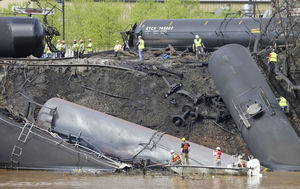Safety Offshore
Add to Cart
Safety Offshore
Offshore safety management and the implementation of a SEMS program has much in common with other process industries, particularly onshore facilities such as refineries, pipelines and chemical plants. However, each industry does have its unique safety issues and problems.
Safety Moment #24: Personnel Transfer (Billy Pugh) Baskets
The material shown here has been extracted from the ebook 52 Process Safety Moments and the book Offshore Safety Management .
Personnel transfer baskets are used to move personnel from platforms and rigs to and from service boats.
Citations for Sutton Technical Books
Safety Moment #3: Flammable Range and Flash Point
The material shown here has been extracted from the ebook 52 Process Safety Moments and in the book Plant Design and Operations.
Safety Moments for the Process and Energy Industries
Safety Moments
Safety Moments are short presentations that illustrate some aspect of personal or process safety. They are often used to start a meeting.
They generally fall into one of the following categories:
404
Oops!
Page doesn't exist or some other error occurred.
Go to our homepage or go back to the previous page.
Incidents

This page lists some of the incidents, large and small, that have occurred in the process and energy industries. Lessons learned from them are organized according to the elements of process safety management.
Discussion to do with the topic of Incident Investigation is provided in the following:
Books
The following books by Ian Sutton are available.
